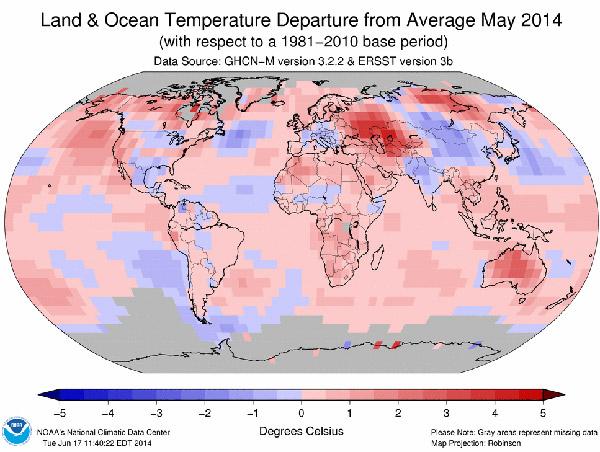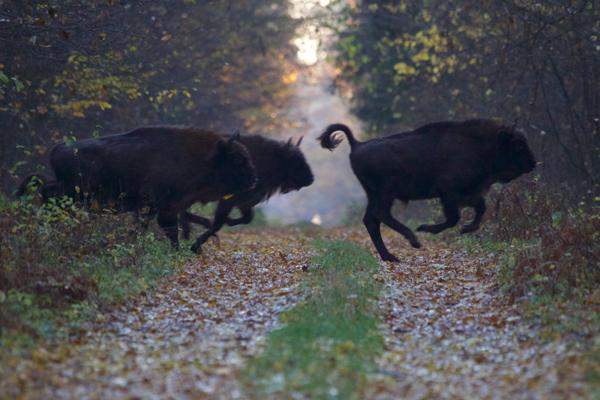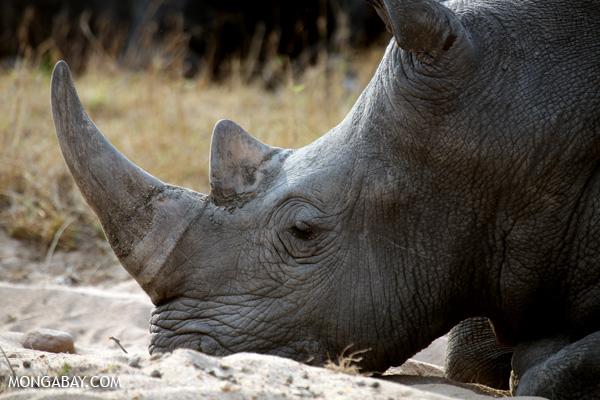On land, May brought especially warm weather to Australia, eastern Russia and central Asia, and portions of Canada and Alaska. In contrast, portions of the U.S., China, India, and Central Europe were cooler than usual. Over both land and sea, May was 0.74 degrees Celsius (1.33 degrees Fahrenheit) above the 20th Century average.
The new data means that the top three warmest Mays all occurred in the last five years: this year was the warmest, 2010 was the second, and 2012 the third.
To date, 2014 is the fifth warmest year on record, but that could change as scientists eye the northern Pacific Ocean for signs of El Niño conditions. El Niño, which starts with super-heated oceans, brings extreme weather and unusually warm conditions across large regions of the planet. In fact, many of the world’s hottest years—including 1998 and 2010—were El Niño years. Currently, NOAA says there is a 70 percent chance of an El Niño forming during the summer and an 80 percent chance during the fall and winter of this year.
Global warming—caused by burning fossil fuels, destruction of natural habitats, and industrialized agriculture—has raised the world’s temperature by approximately 0.8 degrees Celsius (1.44 degrees Fahrenheit) since the late 19th Century. While scientists have warned about the crisis for decades, governments have moved slowly to tackle it with greenhouse gas emissions continuing to rise.
This article was originally written and published by Jeremy Hance, a contributing writer for news.mongabay.com. For the original story and more information, please click HERE.




